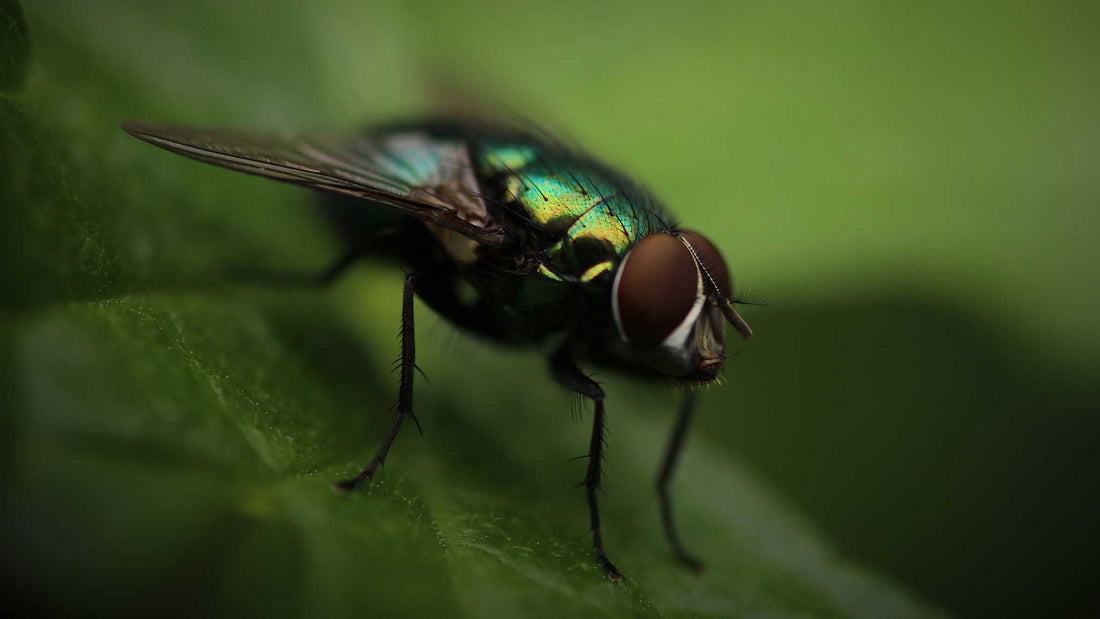
Fly Strike in Dogs: 5 Tips to Prevent Fly Bites on Dog Ears
What Is Fly Strike in Dogs?
Fly strike, also known as myiasis, happens when flies bite and irritate a dog’s ears, sometimes leading to infection and maggots. It’s painful and most common in warmer months. Here’s how to spot, treat, and prevent fly strike in dogs
What to Do If Flies Are Biting Your Dog’s Ears
If at any point in time you are worried or unsure of the health or wellbeing of your pooch, consult your trusted veterinarian. In saying this, if you do notice flies biting your dog's ears or fly bites on your dog's ears, here are a few tips to treating and preventing fly strike.
5 Tips to Prevent Fly Strike and Fly Bites on Dogs
Fly strike is painful for dogs and frustrating for owners, but there are simple steps you can take to reduce the risk. Prevention comes down to keeping your dog’s skin healthy, minimising exposure to flies, and maintaining a clean environment. Here are five practical ways to protect your dog from fly bites and fly strike.
Keep the Area Clean: Maintain a Clean Environment for Your Dogs Ears
If you notice any fly bites on your dog’s ears, the first step is to gently clean the area. Use warm water and a mild, vet-approved antiseptic wash. This removes dirt, bacteria and fly saliva, which can all make irritation worse. Regular cleaning also helps prevent infection, which is one of the biggest risks with fly strike. Never use strong chemicals or heavily scented oils on your dog’s skin, as these can cause more harm than good.
Bring Your Dog Indoors on Hot Days
Flies thrive in warm, humid weather. If the day is particularly hot, bring your dog inside during peak fly activity times, usually late morning to early evening. Even setting them up in a shaded garage, laundry or cool indoor space can make a big difference. Not only does this reduce their exposure to flies, but it also helps protect your dog from heat stress and sunburn, which can make ears more vulnerable to fly strike.
Maintain a Clean Environment
Flies are opportunistic and will swarm anywhere there is food waste, droppings or unclean bedding. A dog that spends time in a messy backyard or kennel is at much higher risk. Keep your dog’s living space tidy by removing droppings daily, cleaning bowls, and replacing bedding if it becomes soiled. If you feed raw food outdoors, make sure leftovers are cleared away so flies are not attracted to the smell. A clean environment is one of the simplest but most effective prevention strategies.
Use Plants That Repel Flies
Some plants act as natural fly repellents. Basil is a great option as it releases a scent that flies dislike, while also being useful in your kitchen. Lavender, rosemary and mint can also be planted around outdoor areas where your dog spends time. Not only do these plants help keep flies away, but they also make your garden more pleasant for you and your family. This is a safe, chemical-free way to discourage flies while improving the environment for your dog.
Set Up Natural Fly Traps
Hardware stores like Bunnings stock a wide range of natural fly traps. These traps attract and capture flies before they can reach your dog. Place them in areas where flies are most active, such as near bins, compost piles or outdoor eating spaces, but keep them out of reach of your dog. Used consistently, fly traps reduce the overall fly population on your property, which lowers the risk of fly strike dramatically.
Frequently Asked Questions About Fly Strike in Dogs
What Does Fly Strike Look Like on Dogs?
Fly strike usually appears on the tips of a dog’s ears, where the skin is thin and sensitive. You may notice small red spots, scabs, bleeding, or crusty patches. In more advanced cases, the wounds can look raw and irritated. If fly strike is left untreated, flies may lay eggs in the damaged skin, which hatch into maggots. This is extremely painful for your dog and requires immediate veterinary attention.
Can Dogs Die From Fly Strike?
Yes, if fly strike is severe and not treated, it can become life-threatening. Maggots can burrow deeper into the tissue, leading to infection, blood poisoning, and serious health complications. While most cases are mild if caught early, it’s important to act quickly. Always consult a vet if you see signs of fly strike or if your dog’s ears are bleeding, inflamed, or appear infected.
Protecting Your Dog From Fly Strike
Fly strike is painful and can quickly become serious if left untreated. The best way to protect your dog is through prevention — keeping their environment clean, limiting exposure to flies, and acting fast at the first signs of irritation. With a little extra care, you can make sure your dog stays comfortable and safe during the warmer months.
